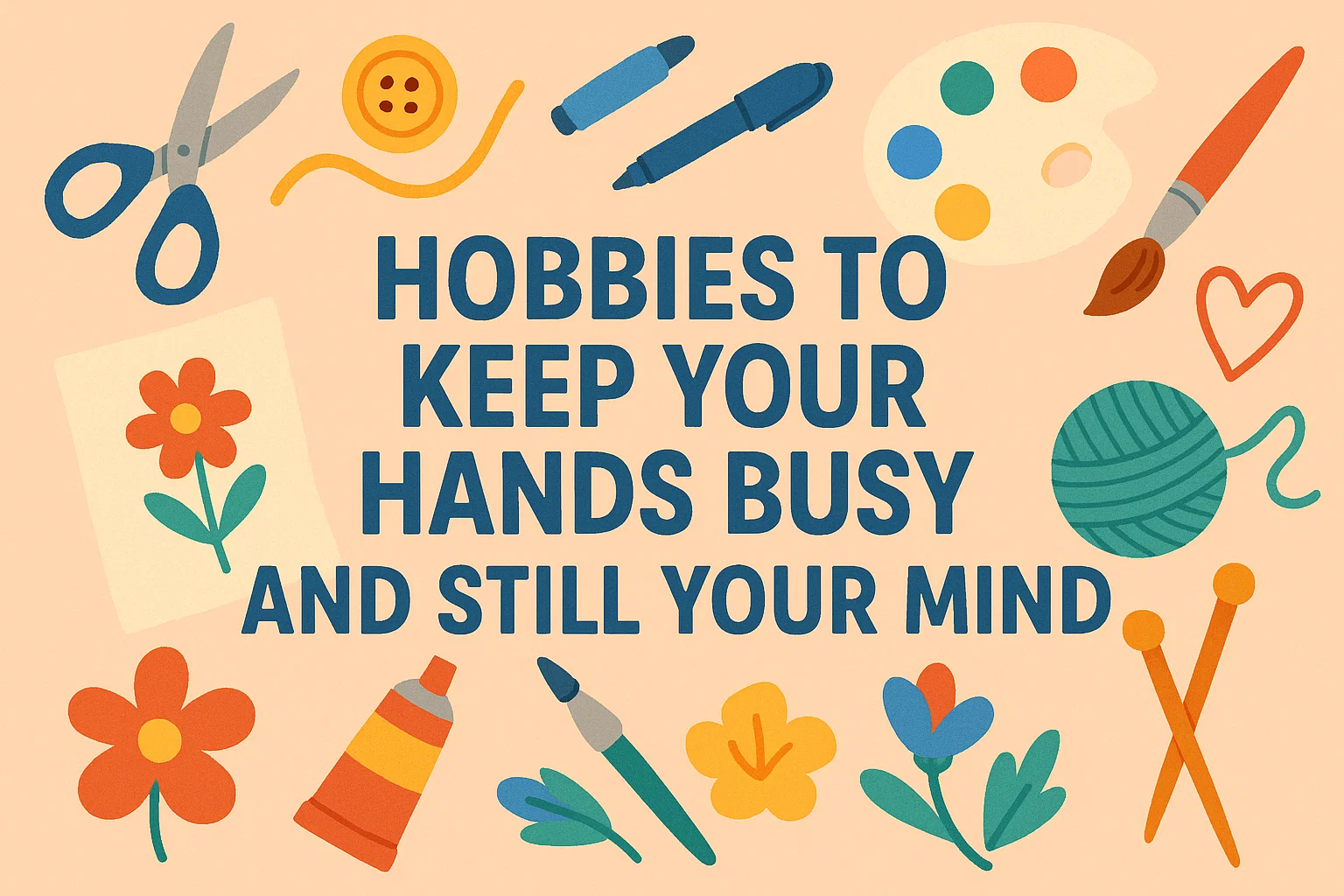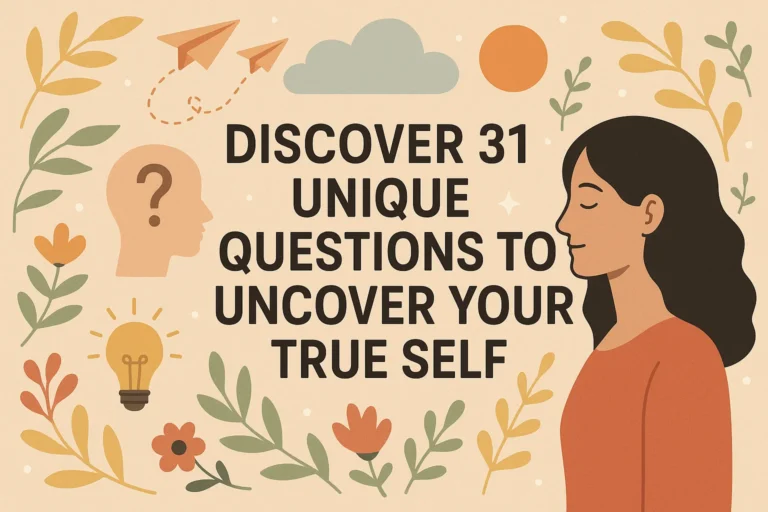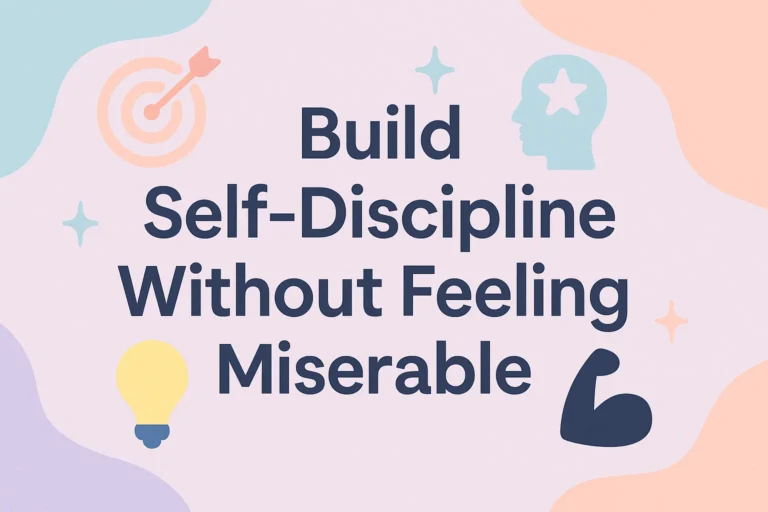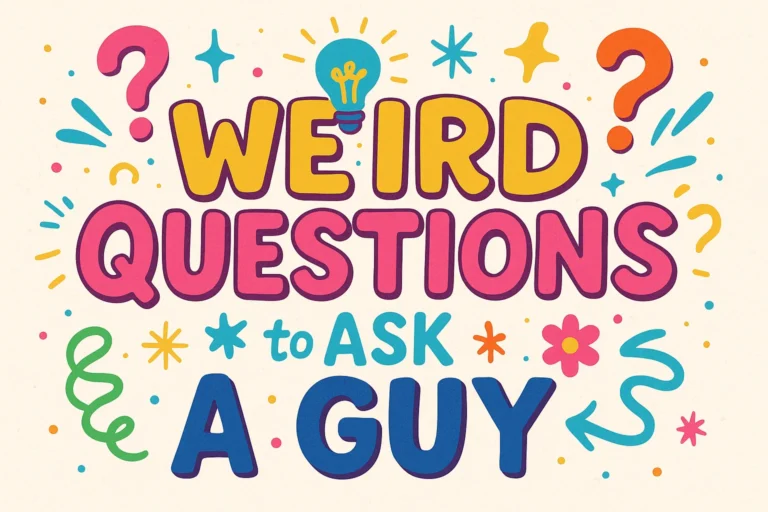20 Self Improvement Tips Creative Hobbies to Keep Your Hands Busy Calm Your Mind
Feeling that low-key buzz of anxiety humming in the background of your life? Or maybe you’re just tired of doomscrolling, your thumb moving on autopilot while your brain turns to mush. I get it. We’re all looking for a release valve, a way to quiet the mental noise and actually make something.
Well, what if I told you the secret to a calmer mind isn’t another meditation app you’ll forget to open, but something far more tangible? It’s in your hands. Literally. Creative hobbies are the ultimate form of self-improvement because they don’t feel like work. They’re play with purpose. They keep your hands busy, which in turn, gives your overthinking mind a much-needed vacation.
So, grab a drink, get comfy, and let’s chat about 20 brilliant, hands-on hobbies that are basically therapy, but way more fun and with better results.
Why Working With Your Hands is a Brain Game Changer
Ever wondered why kneading dough or sketching a simple shape can feel so incredibly satisfying? It’s not just in your head. Well, it is, but it’s science!
When you engage in a focused, physical task, you’re essentially forcing your brain to hit the pause button on its endless to-do list and worries. This state of focused immersion is often called flow state. You’re so absorbed in the doing that there’s no room for anything else. It’s a full-system reset for your mental RAM.
Plus, creating something—anything—from a lump of clay, a skein of yarn, or a blank page gives you a tangible hit of accomplishment. In a world of digital ephemera and completed Zoom meetings, there’s something profoundly grounding about pointing to a physical object and saying, “I made that.” It’s a boost to your self-esteem that no amount of positive affirmations can match.
The Creative Arsenal: 20 Hobbies to Try
Alright, let’s get into the good stuff. Here’s a buffet of creative pursuits. Don’t try to do them all at once (unless you’re aiming for a craft-store-hoarder aesthetic, I guess). Pick one that sparks joy and just… start.
For the Word Nerds & Stationery Lovers
1. Journaling and Bullet Journaling
This is more than just “Dear Diary…” stuff. It’s a brain dump, a planner, and a creative outlet all in one. I use mine to track habits, vent about a bad day, and doodle terrible drawings that make me laugh. The act of physically writing things down slows your thinking and helps process emotions. Pro tip: Don’t get sucked into the Instagram hype of perfect bujos. Yours can be a mess of scribbles and crossed-out lists. It’s for you, not the ‘gram.
2. Hand Lettering and Calligraphy
Talk about a practice in patience and mindfulness. You have to focus on every single stroke, the pressure of the pen, the shape of the curve. It’s impossible to think about your inbox when you’re trying to nail a perfect flourish. Start with a simple brush pen and a practice sheet—you’ll be amazed at the progress you make.
3. Book Binding
Feeling extra? Why not make your own journal from scratch? This hobby combines precision, creativity, and a bit of old-world charm. You get to choose the paper, the cover material, everything. Holding a book you bound yourself is a next-level feeling of accomplishment.
For the Crafty & Textile-Inclined
4. Knitting or Crocheting
The classic “keep your hands busy” hobby for a reason. The repetitive rhythm of the stitches is like a mantra for your fingers. And at the end, you have a cozy scarf or a weirdly shaped-but-lovable pot holder. It’s the hobby you can do while binge-watching your favorite show, so you feel productive even when you’re relaxing. Win-win.
5. Embroidery
This is not your grandma’s floral sampler (unless you want it to be!). Modern embroidery is bold, sassy, and incredibly expressive. Stabbing something thousands of times with a tiny needle is, FYI, a fantastic stress-reliever. You can customize clothes, create wall art, or even mend your favorite jeans with style.
6. Weaving
Small lap looms are inexpensive and ridiculously addictive. Watching a pattern emerge from threads you’ve chosen is pure magic. It’s tactile, colorful, and the end result is a beautiful, textural piece of art for your home.
7. Macramé
Knots on knots on knots. Macramé is having a huge comeback, and for good reason. It’s cheap to start (all you need is cord and your hands), and you can create everything from plant hangers to wall hangings. It’s very satisfying to see a complex-looking piece come together from a series of simple knots.
For the Makers & Builders
8. Whittling and Wood Carving
All you need is a piece of softwood and a sharp knife. Whittling forces you to be present and careful (for obvious reasons!) and connects you to a primal form of making. You start with a block and slowly reveal the shape hidden within. It’s incredibly meditative, and you get to make a cool little spirit animal or a slightly wobbly spoon.
9. Building Miniatures or Models
The ultimate in focused attention to detail. This hobby requires patience, a steady hand, and the ability to see a tiny, tiny big picture. The world just melts away when you’re painting a 1:100 scale Victorian sofa. It’s a fantastic escape and a serious test of your precision skills.
10. Pottery and Clay Sculpting
There is nothing quite as grounding as getting your hands in clay. It’s a messy, sensory experience that forces you to connect with the material. Whether you’re throwing on a wheel or hand-building, clay has a mind of its own, teaching you lessons in control and, more importantly, surrender. Not everything will turn out, and that’s part of the fun.
For the Artists & Colorists
11. Adult Coloring Books
Okay, hear me out. Before you roll your eyes, this isn’t just for kids. The simple act of choosing colors and staying within the lines (or not!) is a proven form of active meditation. It requires just enough focus to quiet your mind but not so much that it’s stressful. It’s the perfect low-barrier entry into a creative headspace.
12. Painting (Watercolor, Acrylics, etc.)
You don’t have to be Bob Ross to enjoy slapping some paint on a canvas. The flow of watercolors, the boldness of acrylics—it’s all about playing with color and texture. Embrace the happy accidents. The goal isn’t a masterpiece; it’s the process of mixing colors and making marks.
13. Sketching and Doodling
The most portable hobby on this list. All you need is a pen and any scrap of paper. Doodling in a meeting or while on the phone isn’t rude; it’s actually helping you listen and retain information better. It’s a visual form of fidgeting that keeps your brain engaged and calm.
For the Green Thumbs
14. Gardening (Especially Container Gardening)
Nurturing a plant from seed to fruit (or flower) is a slow, rewarding lesson in care and patience. Getting your hands in the soil is literally grounding—studies show soil microbes can actually act as natural antidepressants. No yard? No problem. A windowsill herb garden counts!
15. Creating Terrariums or Kokedama
Building a tiny, self-contained ecosystem is like being a god for a day, but, you know, for plants. It’s a creative, architectural hobby that combines an eye for design with a love of greenery. Kokedama (Japanese moss balls) are especially fun and make for stunning living decor.
For the Techy Creators
16. Learning Basic Electronics (e.g., Arduino)
If you think creativity is only about paint and yarn, think again. Building a simple circuit to make an LED blink is its own kind of magic. It’s a puzzle that engages the logical and creative sides of your brain simultaneously. The satisfaction of writing a few lines of code and seeing a physical object respond is unbeatable.
17. 3D Printing and Modeling
Talk about bringing your ideas to life! Learning to create a 3D model on your computer and then watching a printer build it layer by layer is a futuristic thrill. The hobby requires problem-solving, design skills, and a whole lot of patience for printing fails. But when it works? Pure joy.
For the Unconventional & Quirky
18. Puzzle Building
The humble jigsaw puzzle is a classic for a reason. Spreading out the pieces and slowly assembling the picture is a fantastic way to achieve a state of flow. It’s a solo activity that feels collaborative—you’re working with the puzzle maker to solve a visual problem. Put on some music or a podcast and just get lost in it.
19. Playing a Musical Instrument (Ukulele is a great start!)
Yes, this absolutely counts as a hands-on hobby! Learning an instrument is a incredible workout for your brain and your hands. The ukulele is a fantastic beginner instrument—it’s small, relatively easy to learn a few chords, and hard to play without smiling. Strumming away your frustrations is highly recommended.
20. Baking and Decorating
The most delicious hobby on the list. Baking is a science that requires precise attention, which is a great mental distraction. And the decorating part? That’s pure artistry. You get to be creative and you get a cookie at the end. That’s what I call a positive feedback loop.
How to Actually Start (Without Getting Overwhelmed)
The biggest hurdle is often just beginning. Here’s my advice:
- Follow the fun. What genuinely excites you? Start there.
- Embrace the suck. Your first project will probably be kind of bad. Mine always are! That’s how you learn. The goal is enjoyment, not perfection.
- Gather the basics. You don’t need every single tool and the most expensive supplies on day one. A starter kit is plenty.
- Give it time. Don’t expect instant zen or mastery. Let the process be the point.
The real win here isn’t a perfect scarf or a gallery-worthy painting. It’s the quiet mind you cultivated while making it. It’s the few minutes or hours where your only job was to create, not to consume or worry.
So, what are you waiting for? Your brain is begging for a break. Pick one thing from this list that made you think, “Huh, that could be fun,” and give it a shot. Your hands—and your mind—will thank you for it.
Now if you’ll excuse me, I have a date with some yarn and a new knitting pattern I’m probably going to mess up. And I can’t wait 🙂







